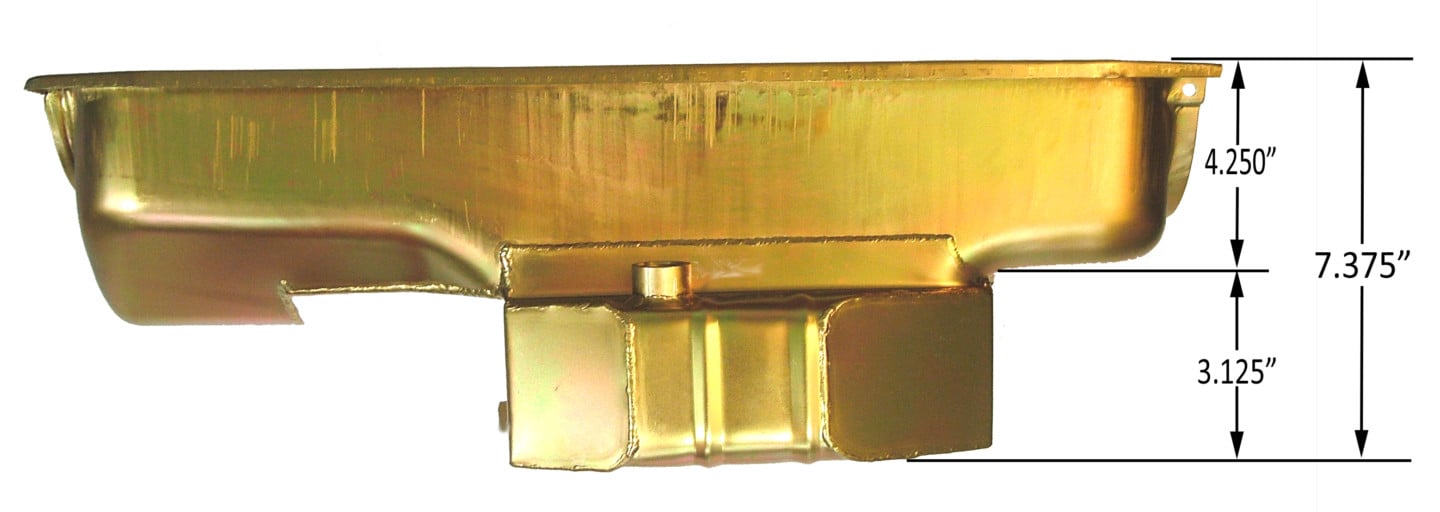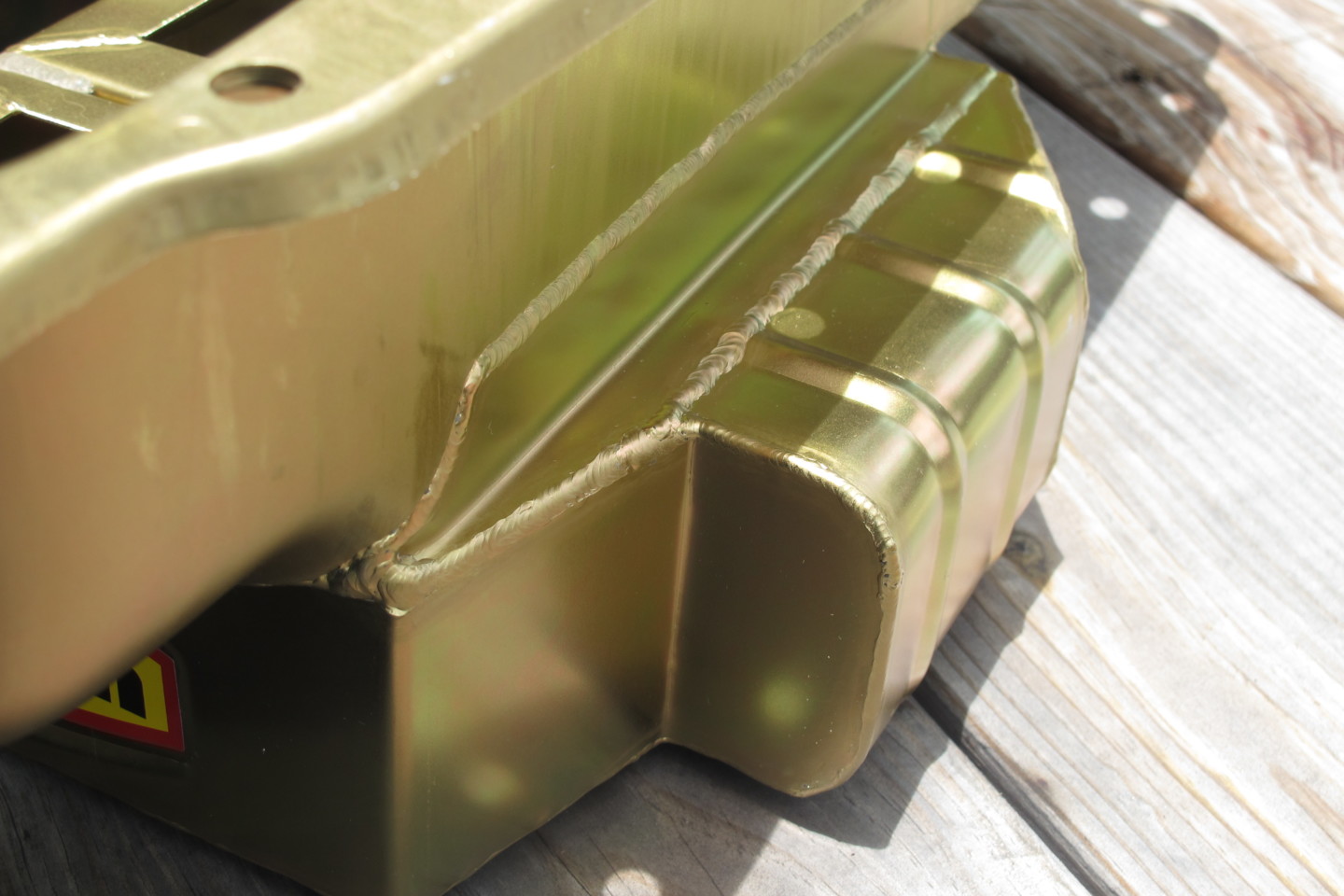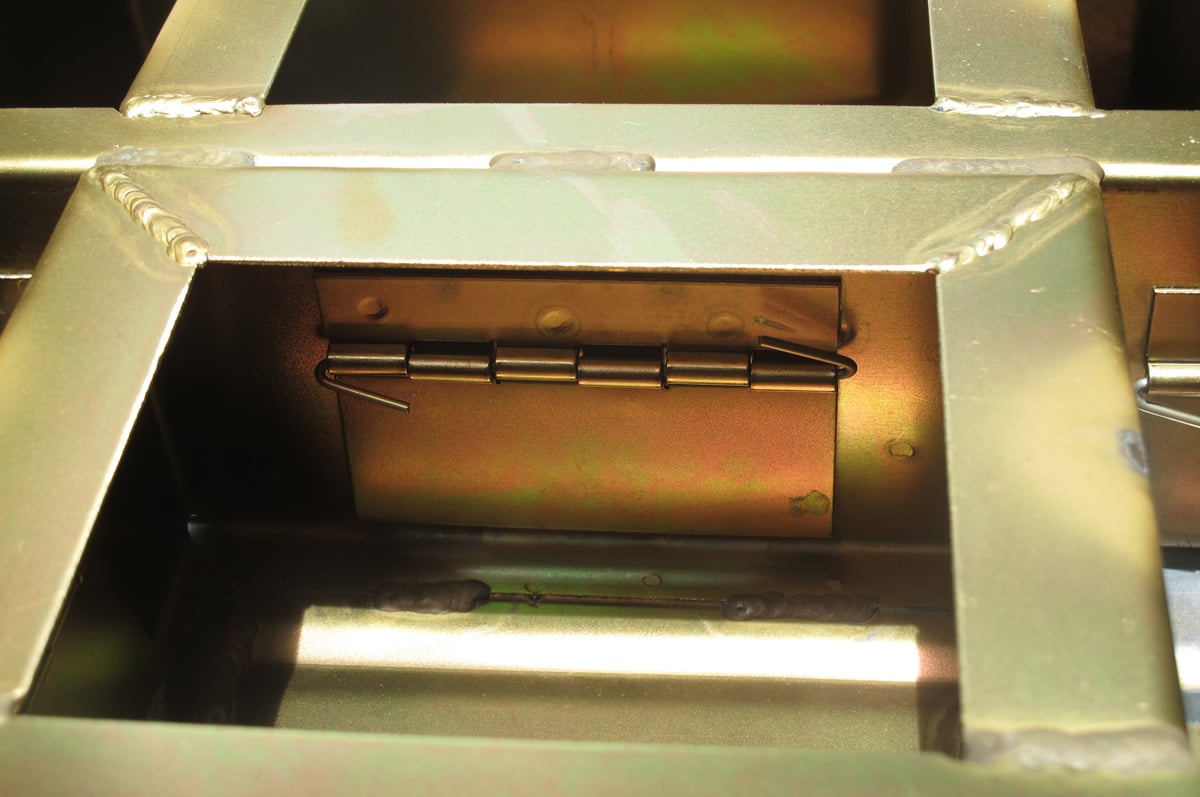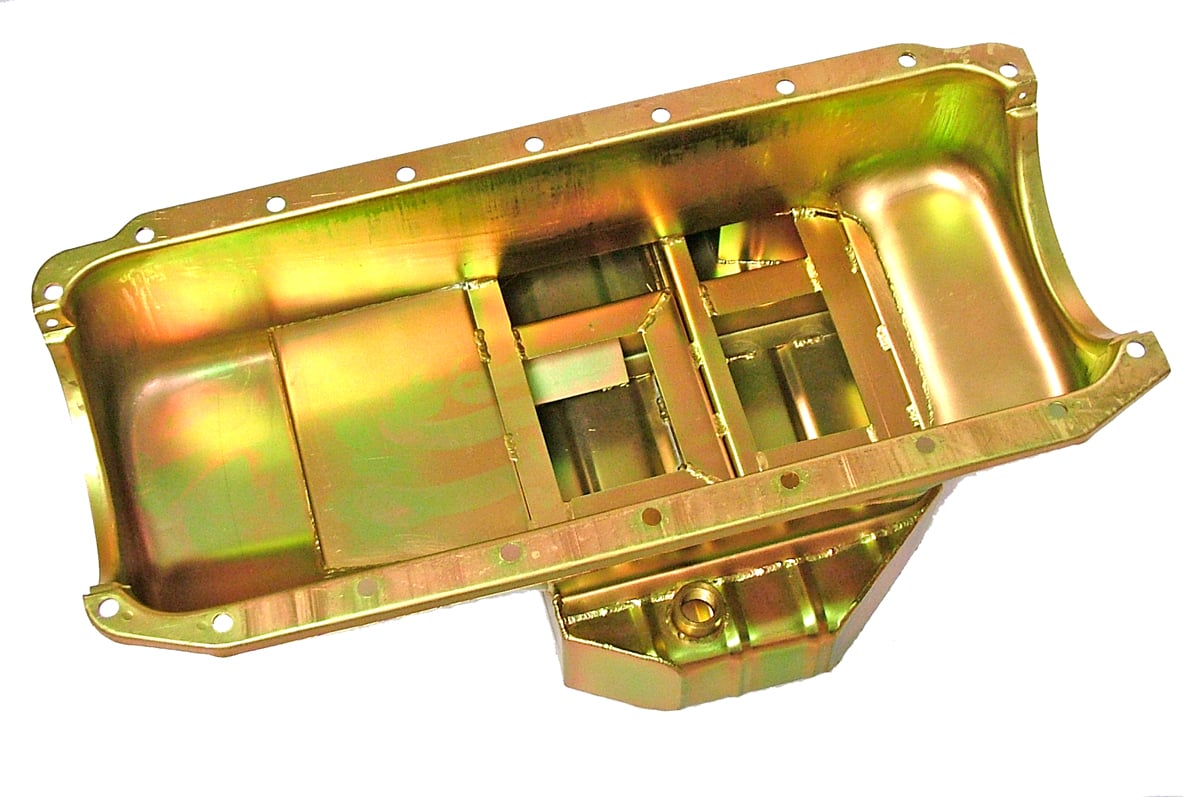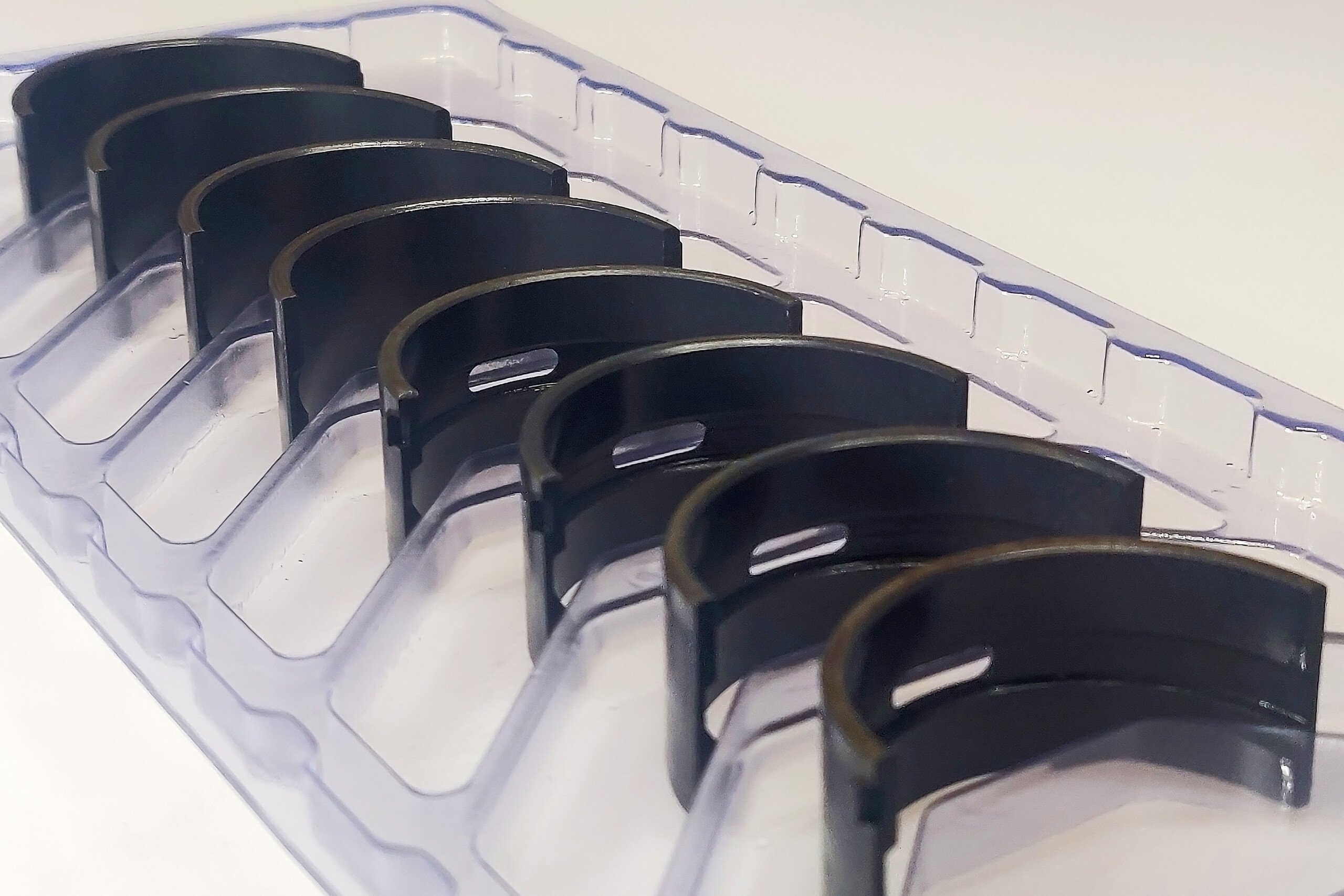When it comes time to building an engine, what is the first thing you consider? Is it horsepower? Maybe it’s the compression ratio you want to achieve. Maybe it is one of the many other factors that you should be considering. But how often is the oil containment system at the top of the list?
We’re in the process of gathering parts to build a 416ci small-block Mopar, and one of the first things we thought about was proper oiling. If you are not giving your main, connecting rod, and cam bearings the right amount of oil, horsepower and compression will mean nothing, much sooner than it should. The folks at Milodon agree.
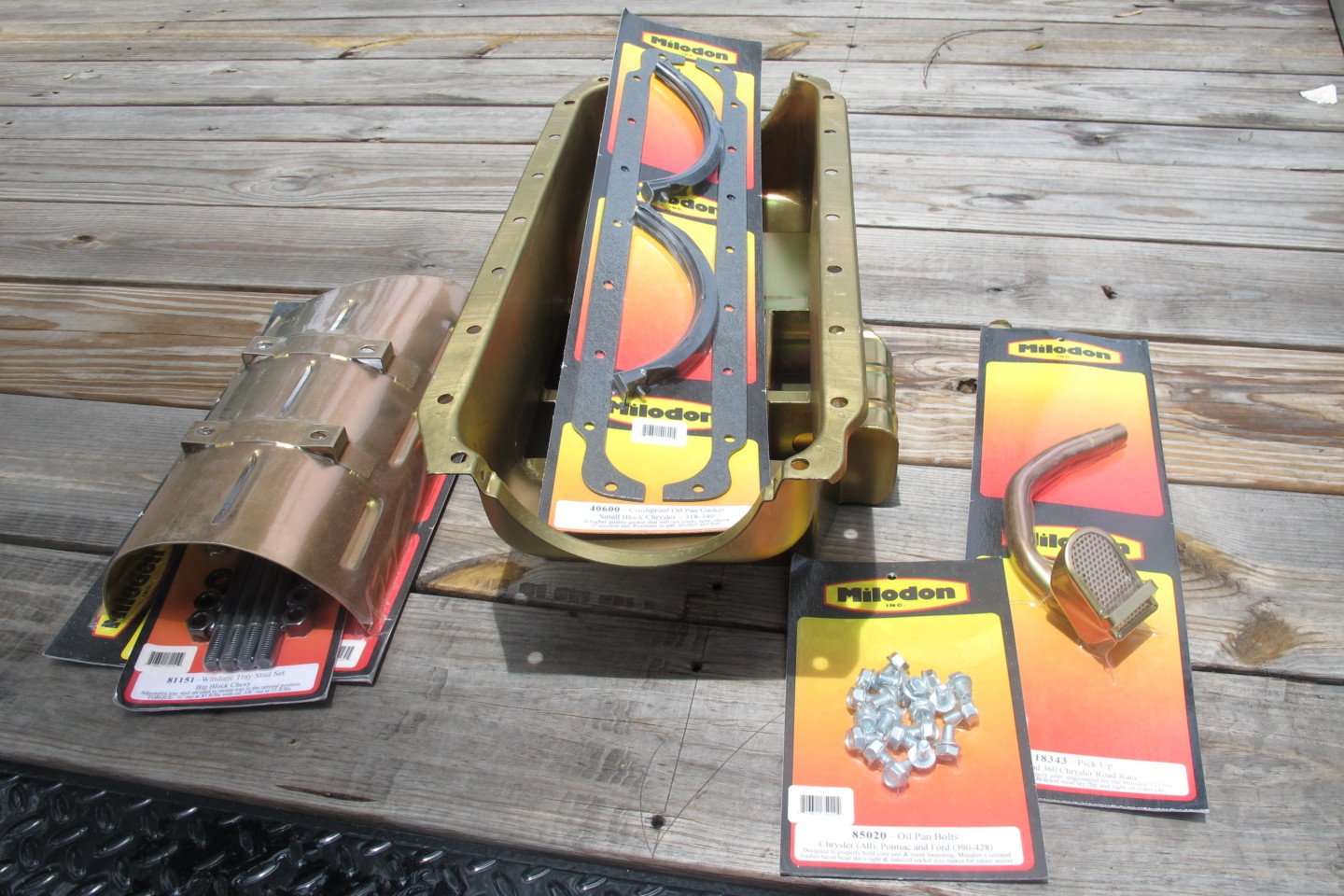
A good oiling system means using the right parts for a given application. All that is missing is a new oil pump.
While some feel an OE oil pan is sufficient, The only similarities that can be found between the stock pan and an aftermarket unit is the fact they both hold oil. Upon deeper inspection, it’s readily apparent that aftermarket pans are designed to improve on what the factory does: not only hold oil, but also deliver better oil control.
The Milodon product line of oil pans includes pans designed for various types of usage. These include pans for circle track racing, drag racing, road racing, and street use. Each style of oil pan has strengths for the intended application. Since the 416 small block we’re building will not see much autocross or circle track racing, one would think we don’t need a pan resembling one designed for road racing. However, in this case, that is a gray area.
Although Milodon has many pans to choose from, for our “340” stroker build, we decided that Milodon P/N: 31590 would be a perfect choice. Milodon considers this a Pro Touring pan, and it is designed to give stock or better ground clearance as well as both increased oil capacity and control that a high-horsepower engine requires. Fitting a larger than stock oil pan into an A-Body Mopar can sometimes cause some fitment issues. The K-frame design is not friendly to much that is larger than stock.
This Milodon pan features a stock-location sump with kick-outs to increase volume, hence the gray area. Oil pans with side kick-outs are usually designed for applications where cornering is required. In this case, we are looking for more capacity and this pan delivers. With an eight-quart capacity, the sump kick-outs increase oil capacity while still offering ample ground clearance. Speaking of ground clearance, the stock pan’s sump is nearly 8-inches deep while the Milodon sump is just shy of 7.5-inches deep.
This pan is not just an open-sump design that holds oil, as that would offer no oil control. So inside, we find five highly effective trap doors to give great oil control. While the baffles are designed to keep the pickup submerged when cornering, the five trap doors are actually designed to keep the oil in the sump during a hard launch or even hard braking situation. This results in consistent oil pressure in any instance.
An added benefit we might even use at this time is the 1/2-inch NPT fitting for those wanting to include and an oil temperature sender. We also checked with the folks at Milodon, and are told this pan will not interfere with the stock steering — which can be an issue with some aftermarket pans. In fact, this is not our first experience with a Milodon pan of this design, so we have confirmed fitment in a late-’60s A-Body.
With this pan, Milodon strongly suggests the use of its windage tray, P/N: 32230. Coincidentally, this tray fits both the small-block Mopar and the 392 Hemi. The tray mounts to the numbers three and four main caps utilizing windage tray kit P/N: 81151.
According to Milodon, the studs allow for height adjustment of the tray for larger stroke clearance and various connecting rod designs. The tray is notched to allow the pickup to exit the oil pump without interference. We’re told this tray will work with all oil pans, including stock units, not just Milodon’s own oil pans. The engine block bolt holes must be tapped with a bottoming tap as deeply as possible to achieve maximum thread engagement and to keep each stud as short as possible to avoid oil pan interference.
Oil control is a huge concern for many performance junkies. The sump baffling and trap doors are designed with that premise in mind.
While windage trays do not actually increase an engine’s power production directly, they provide improved efficiency through oil control, resulting in reduced oil splashing on the rotating assembly, less aeration of the oil, and even lower oil temperatures. All of these benefits will help the engine’s performance.
Once we start assembling the engine, we’ll talk more about the reasons we chose the Milodon pan and windage tray and give you more information about our selection. Our block is at the machine shop right now, so check back often for more updates.

